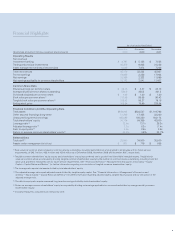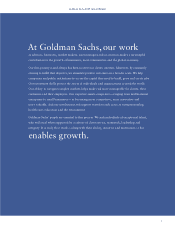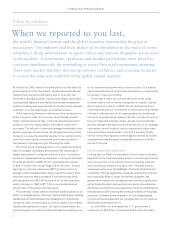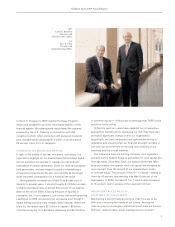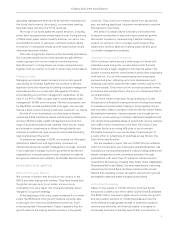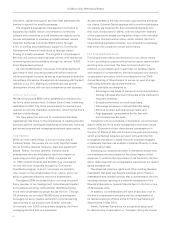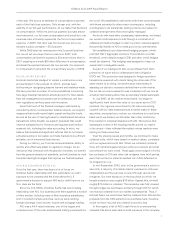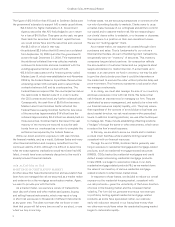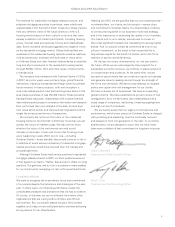Goldman Sachs 2009 Annual Report Download - page 5
Download and view the complete annual report
Please find page 5 of the 2009 Goldman Sachs annual report below. You can navigate through the pages in the report by either clicking on the pages listed below, or by using the keyword search tool below to find specific information within the annual report.
3
right
Lloyd C. Blankfein
Chairman and
Chief Executive Of cer
left
Gary D. Cohn
President and
Chief Operating Of cer
in the U.S.Treasury’s TARP Capital Purchase Program,
which was designed to promote the broader stability of the
nancial system. We subsequently repurchased the warrants
acquired by the U.S.Treasury in connection with that
investment which, when combined with preferred dividends
paid, represented an additional $1.4billion, or an annualized
23percent return for U.S. taxpayers.
CONSERVATIVE FINANCIAL PROFILE
In light of the events of the last two years, we believe it is
important to highlight for our shareholders that GoldmanSachs
did not and does not operate or manage our risk with any
expectation of outside assistance. Given our roots as a privately-
held partnership, we have always focused on maintaining a
conservative nancial pro le and view liquidity as the single
most important consideration for a nancial institution.
Having steadily increased our Global Core Excess pool of
liquidity for several years, it stood at roughly $170billion in cash
or highly liquid securities, or almost 20percent of our balance
sheet at the end of 2009. Keeping this pool of liquidity is
expensive, but, in our judgment, it is money well-worth spending.
Leading up to 2008, we reduced our exposures even though it
meant selling at prices many thought were irrational. When the
crisis hit, we raised nearly $11billion in capital — $5billion
of preferred equity from Berkshire Hathaway and $5.75billion
in common equity
—
without any knowledge that TARP funds
would be forthcoming.
While the past two years have validated our conservative
approach to liquidity and to managing our risk, they have also
prompted signi cant change within our organization.
Speci cally, we have embraced new realities pertaining to
regulation and ensuring that our nancial strength remains in
line with our commitment to the long-term stability of our
franchise and the overall markets.
We became a nancial holding company, now regulated
primarily by the Federal Reserve and subject to new capital and
leverage tests. Since May 2008, our balance sheet has fallen
by approximately one-quarter while our capital has increased by
over one-half. Over 90percent of our shareholders’ equity
is common equity. The amount of level 3 — or illiquid — assets is
down by 40percent representing less than 6percent of our
total assets. In 2009, our Basel
I
Tier 1 capital ratio increased
to 15percent, well in excess of the required minimum.
IMPORTANT ROLES WE PLAY
ON BEHALF OF OUR CLIENTS
Maintaining a sound nancial pro le is vital if we are to be
effective in meeting the needs of our clients. Among the
roles we play for our largely institutional client base are advisor,
nancier, market maker, asset manager and co-investor.
Goldman Sachs 2009 Annual Report


